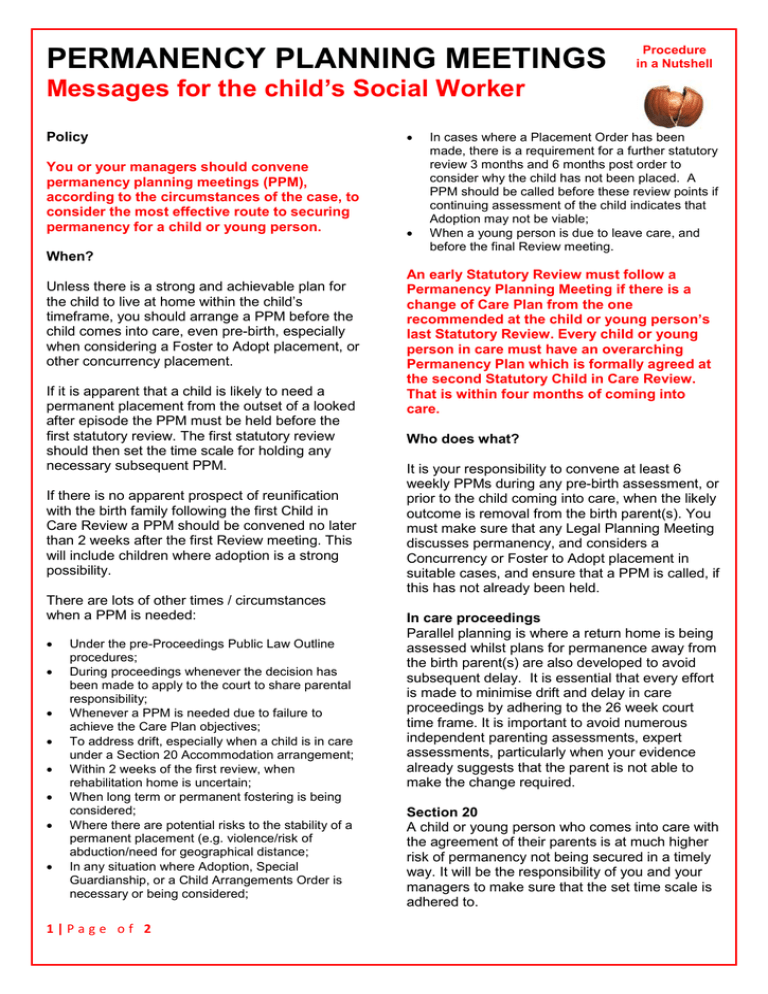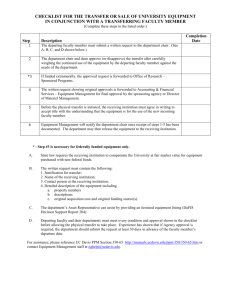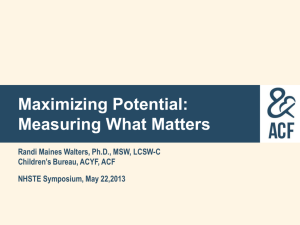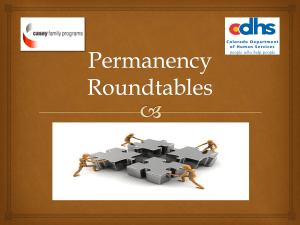PERMANENCY PLANNING MEETINGS Messages for the child's
advertisement

PERMANENCY PLANNING MEETINGS Procedure in a Nutshell Messages for the child’s Social Worker Policy You or your managers should convene permanency planning meetings (PPM), according to the circumstances of the case, to consider the most effective route to securing permanency for a child or young person. When? Unless there is a strong and achievable plan for the child to live at home within the child’s timeframe, you should arrange a PPM before the child comes into care, even pre-birth, especially when considering a Foster to Adopt placement, or other concurrency placement. If it is apparent that a child is likely to need a permanent placement from the outset of a looked after episode the PPM must be held before the first statutory review. The first statutory review should then set the time scale for holding any necessary subsequent PPM. If there is no apparent prospect of reunification with the birth family following the first Child in Care Review a PPM should be convened no later than 2 weeks after the first Review meeting. This will include children where adoption is a strong possibility. There are lots of other times / circumstances when a PPM is needed: Under the pre-Proceedings Public Law Outline procedures; During proceedings whenever the decision has been made to apply to the court to share parental responsibility; Whenever a PPM is needed due to failure to achieve the Care Plan objectives; To address drift, especially when a child is in care under a Section 20 Accommodation arrangement; Within 2 weeks of the first review, when rehabilitation home is uncertain; When long term or permanent fostering is being considered; Where there are potential risks to the stability of a permanent placement (e.g. violence/risk of abduction/need for geographical distance; In any situation where Adoption, Special Guardianship, or a Child Arrangements Order is necessary or being considered; 1|Page of 2 In cases where a Placement Order has been made, there is a requirement for a further statutory review 3 months and 6 months post order to consider why the child has not been placed. A PPM should be called before these review points if continuing assessment of the child indicates that Adoption may not be viable; When a young person is due to leave care, and before the final Review meeting. An early Statutory Review must follow a Permanency Planning Meeting if there is a change of Care Plan from the one recommended at the child or young person’s last Statutory Review. Every child or young person in care must have an overarching Permanency Plan which is formally agreed at the second Statutory Child in Care Review. That is within four months of coming into care. Who does what? It is your responsibility to convene at least 6 weekly PPMs during any pre-birth assessment, or prior to the child coming into care, when the likely outcome is removal from the birth parent(s). You must make sure that any Legal Planning Meeting discusses permanency, and considers a Concurrency or Foster to Adopt placement in suitable cases, and ensure that a PPM is called, if this has not already been held. In care proceedings Parallel planning is where a return home is being assessed whilst plans for permanence away from the birth parent(s) are also developed to avoid subsequent delay. It is essential that every effort is made to minimise drift and delay in care proceedings by adhering to the 26 week court time frame. It is important to avoid numerous independent parenting assessments, expert assessments, particularly when your evidence already suggests that the parent is not able to make the change required. Section 20 A child or young person who comes into care with the agreement of their parents is at much higher risk of permanency not being secured in a timely way. It will be the responsibility of you and your managers to make sure that the set time scale is adhered to. PERMANENCY PLANNING MEETINGS Procedure in a Nutshell Messages for the child’s Social Worker PPM attendance Documentation The permanency planning meeting should be organised by you. Your team manager (and sometimes your service manager) should chair the meeting. The Chair should be provided with the last Statutory Review recommendations, the C&F Assessment, the last Care Plan/statement for the Court, expert assessments etc. It is essential that the Chair is provided with the relevant documents – you should discuss this with your team manager to endure that only relevant documents are sent to the Chair. If you are a social worker in a Children’s Social Work team, a Children In Care team manager should be notified and asked to send a representative. Agenda and decisions You should invite (where relevant): the Children’s Guardian as an observer; the allocated IRO if the child is in care; the supervising social worker from the fostering team; the family finding adoption team social worker; the current carers for the child. If it is not possible for one of these to attend, but here contribution is important, it is essential that their opinions are provided as a brief written report. It is also essential that the views of the child and young person, their parents, and significant others are available to the chair. This might be in writing, drawing, audio or video recording or verbally presented by someone else on their behalf. You or the chair must make it clear to foster carers in attendance that the PPM is not a matching meeting. It may be necessary to hold the meeting in two parts, if the other professionals involved need to discuss the capacity of the current foster carers to permanently care for the child. A decision needs to be made about how the decision is then discussed with the carers in a fair and transparent way. If the case is in proceedings, the local authority responsible solicitor should give any legal advice to the Chair either in person, or by telephone or email beforehand. The Chair will decide the frequency of future PPMs, but never more than 6 weeks apart until the permanency planning process is complete. But following discussion with your manager you can request a further PPM at any stage of the permanency planning process if this is required. 2|Page of 2 After a review of the reports and a discussion of the background, legal context etc, and understanding the views of everyone involved and the current contact arrangements, the chair should lead a review of the permanency options and facilitate decisions about the permanence plan. The Chair should send the decisions to the IRO, the relevant Team Managers, and to the Head of the Adoption Service and County Fostering Manager within 2 working days. The Permanence Plan Following a review to agree the plan if this is necessary, the case will need to be presented to the Adoption Panel (where this is a relinquished baby), the Agency Decision Maker (for nonconsenting adoptions), or the Fostering Panel (for permanent fostering). Or in the case of Special Guardianship and Child Arrangement Orders to the Area Resource Panel if financial assessment is being requested. The Adoption Service or the Fostering Service can provide advice and support to you and your manager who must present the Permanence Plan to the appropriate decision maker or panel in a timely way. Geoff Gurney Interim Assistant Director for Corporate Parenting July 2015 Email me if you found this procedure in a nutshell helpful. PERMANENCY PLANNING MEETINGS Messages for the child’s Social Worker 3|Page of 2 Procedure in a Nutshell




